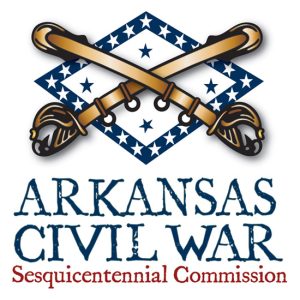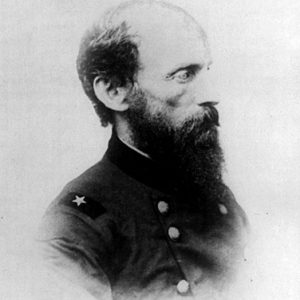calsfoundation@cals.org
Skirmish at Augusta
| Location: | Woodruff County |
| Campaign: | Expedition from Little Rock to Little Red River |
| Date: | August 10, 1864 |
| Principal Commanders: | Brigadier General Joseph R. West (US); Unknown (CS) |
| Forces Engaged: | Elements of the Third Michigan Cavalry (US); Unknown (CS) |
| Estimated Casualties: | None (US); None (CS) |
| Result: | Union victory |
Attempting to locate and destroy Confederate brigadier general Joseph Shelby somewhere in the Little Red River valley, Union forces under Colonel Washington F. Geiger engaged in a small skirmish in the town of Augusta (Woodruff County) on August 10, 1864. The small Confederate force fled the city.
The presence of Brig. Gen. Shelby’s command in northeastern Arkansas plagued Union forces there. After two failed expeditions to destroy Shelby, Union major general Frederick Steele outfitted Brigadier General Joseph R. West in August 1864 with 3,094 men to locate and destroy Shelby, who was believed to be in the Little Red River valley.
Brig. Gen. West divided his command into two provisional brigades. The first, commanded by Col. Geiger of the Eighth Missouri Cavalry, marched from DeValls Bluff (Prairie County), while the second, commanded by Colonel James Stuart of the Tenth Illinois Cavalry, began from Huntersville, modern-day North Little Rock (Pulaski County). En route to a rendezvous point at Bull Bayou in White County, Geiger’s brigade skirmished with Confederates at Hickory Plains (Prairie County) on August 7 while Stuart’s brigade skirmished with Confederates near Stony Point on the same day.
On August 8, West moved his combined force to Searcy (White County), where he was informed that Confederates in the region were consolidating under Shelby at Jacksonport (Jackson County). Determining to attack Jacksonport from the east, West marched to the west side of the White River near Augusta (Woodruff County) on August 9. While requesting riverboats from DeValls Bluff for easier transport of troops, the Third Michigan Cavalry engaged Confederates while seizing Hatch’s Ferry in White County on the White River.
To confuse enemy observers, West split his force on August 10. First, he conducted a feint by sending Stuart’s brigade to Denmark (Jackson County) to convince Confederates of an attack on Jacksonport from the west. The column briefly occupied the area and destroyed a salt-work near Grand Glaize Creek in Jackson County. The second movement focused on Augusta. Having moved the boats seized at Hatch’s Ferry to the south of town, a sergeant and seven troopers from the Third Michigan Cavalry crossed over the White River and briefly skirmished with the Confederates while pushing them out of the city. Later in the day, the remainder of the Third Michigan and two howitzers of the 10th Illinois Cavalry were ferried over to Augusta to protect the approaches from the east. No casualties were reported during the skirmish.
On August 11, reports of heavy Confederate troop concentrations at Jacksonport, the poor condition of his mounts, wet weather, and lack of contact regarding the requested river boats all forced West to reverse his strategy. He began the process of crossing his troops back to the west side of the White River. By August 12, he returned to Searcy, engaging in a skirmish near the town the next day. Continuing a retrograde movement, West arrived at Bull Bayou on August 15 and Little Rock (Pulaski County) on August 16 with Stuart’s brigade. Geiger’s brigade returned to DeValls Bluff.
Overall, West’s expedition illustrates the impact of rivers, poor roads, and weather on a military operation. While the Federals were able to project a sizeable force into the White County region, the space the Confederates had to maneuver in and Shelby’s use of it illustrates his skill in avoiding direct combat when it was not on his terms, and shows why he was such a nuisance to Union commanders in Arkansas.
For additional information:
The War of the Rebellion: A Compilation of the Official Records of the Union and Confederate Armies. Series I, Vol. 41, Part I, pp. 221–230. Washington DC: Government Printing Office, 1891.
Derek Allen Clements
Black River Technical College

 ACWSC Logo
ACWSC Logo  Joseph West
Joseph West 



Comments
No comments on this entry yet.